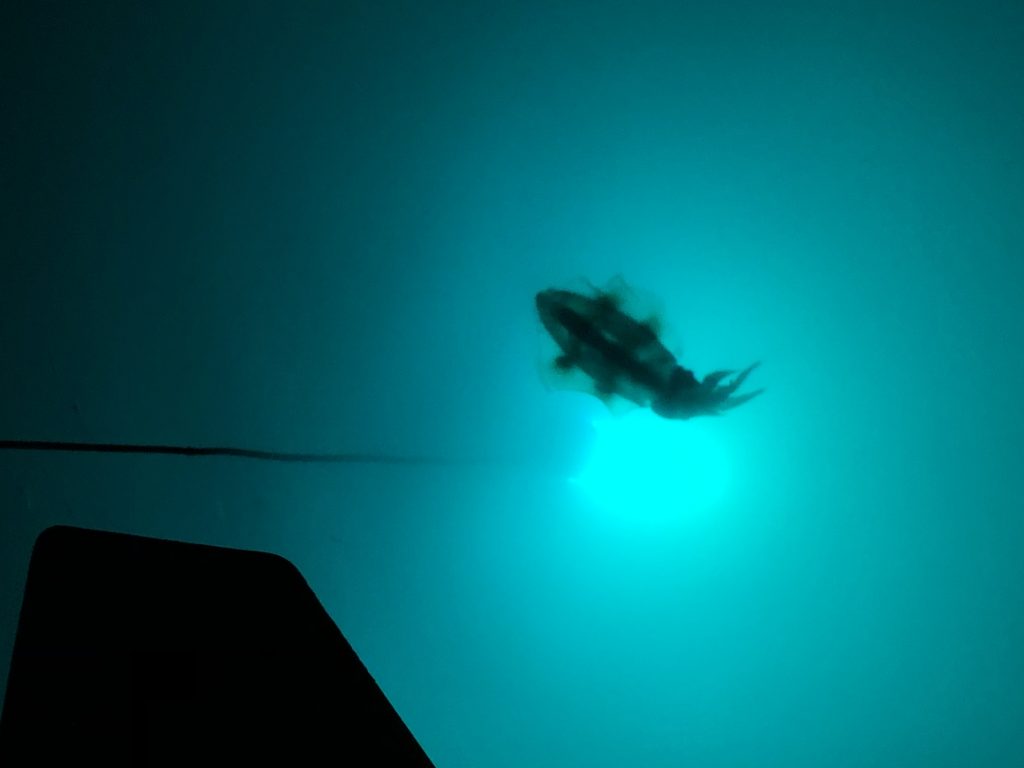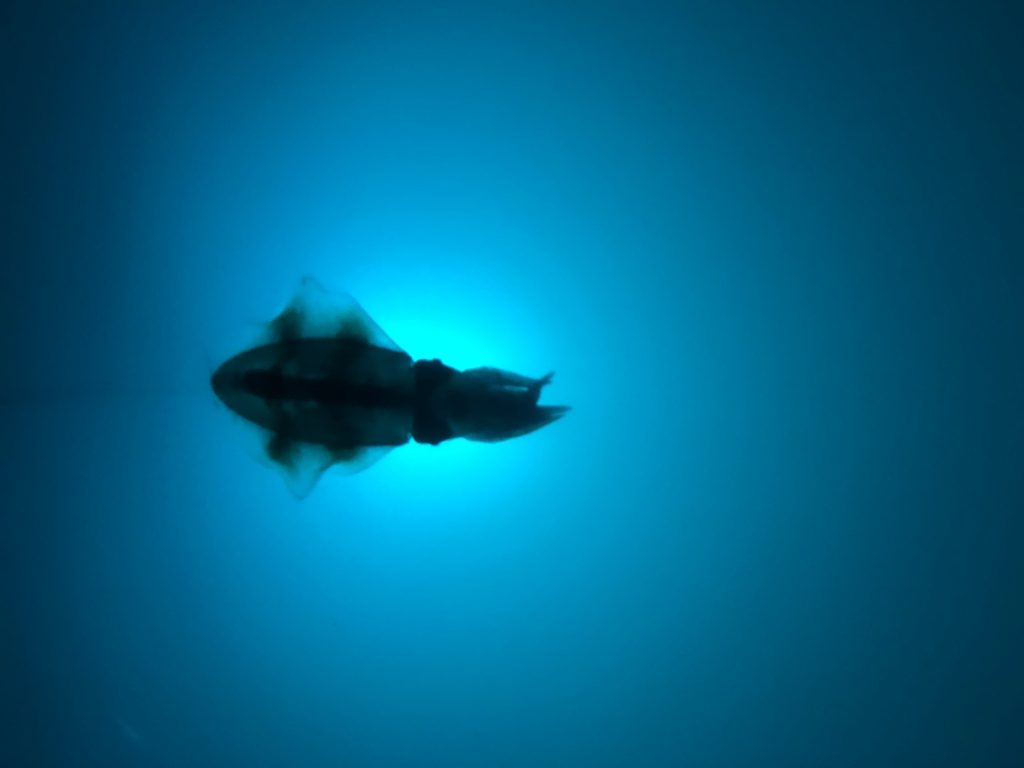Randy loves the underwater light that he received as a Christmas present. He especially likes seeing all of the fish or animals that the light attracts.
Last night he called me outside to see this amazing creature that was about 6″ long.. At first we thought it was a squid but after doing a little research we think it is in fact a cuttlefish.


Squid and cuttlefish are similar as they are both part of class Cephalopoda. Cephalopoda is a type of mollusk that also includes octopus and nautilus. Most cephalopods no longer have a hard outer shell. Cephalopods get their name from the Greek word meaning “head-feet”, because their arms encircle their heads. Both squid and cuttlefish are known as ten-armed cephalopods because they have eight short arms and two long tentacles (as opposed to eight-armed cephalopods like octopuses).
Cuttlefish are in order Sepida, which includes species like the common cuttlefish, flamboyant cuttlefish and striped pajama squid. Squid, on the other hand, are part of order Teuthida, which includes the Caribbean reef squid, short-finned squid and giant squid.
Squid and cuttlefish both maintain remnants of their external shell, but there structures are very different. Squid have a sleek torpedo shaped body where the cuttlefish’s body is more broad and stout. Squid have a flexible, feather-shaped structure inside their body called the pen, where the cuttlefish has a broader internal shell called the cuttlebone. The cuttlebone is porous and helps the cuttlefish stay buoyant underwater. The only thing I knew previously about the cuttlebone was that it was good for birds. Cuttlebone is an important dietary supplement for caged birds becaue it is a good natural source of necessary minerals and calcium which birds need for bone formation and blood clotting. Birds also use the cuttlebone to keep their beaks trimmed and sharp.
Another difference between the squid and the cuttlefish is that squid are fast-moving predators while the cuttlefish are slower and move by undulating long fins on the sides of their bodies. The eyes are also different. Squid have round pupils, while the cuttlefish pupils are W-shaped. We could not get close enough to see the shape of the pupils, but based on the shape of the body, the 6″ length, the undulating fins on the side of the body and the slow movement, we believe this is a cuttlefish.
Cuttlefish eat small molluscs, crabs, shrimp, fish, octopus, worms, and other cuttlefish. Their predators include dolphins, sharks, fish, seals, seabirds, and also other cuttlefish. The average life expectancy of a cuttlefish is about 1–2 years. Cuttlefish have 3 hearts. Two of the hearts pump blood to their large gills while the third heart circulates oxygenated blood to the rest of their body. Their blood is an unusual shade of green-blue from the copper-containing protein hemocyanin. Mammals have the red iron-containing protein hemoglobin. Cuttlefish can mimic the shape and texture of objects around them by extending or retracting tiny bups called papillae on their bodies. This helps them hide among the sand, bumpy rocks or other surfaces in their habitat. Cuttlefish also can instantly change color to match their surroundings. This was another reason we thought this was a cuttlefish. We noticed the cuttlefish instantly changed from a light color to black when it accidently bumped into our boat. Cuttlefish can change color in rapid patterns that they use to help catch prey.
